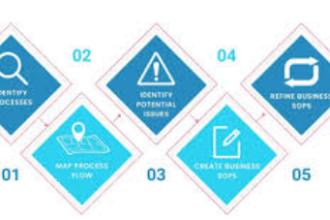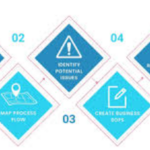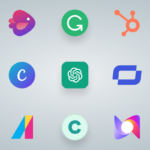In this article, I will discuss the How to Balance Tech and Life. With greater integration of technology into daily activities, maintaining a healthy balance is crucial for an individual’s mental, physical, and emotional health.
Learn to thoughtfully set limits, be present without distraction, and value face to face interactions while keeping the advantages of digital tools.
About Balance Tech and Life
Properly balancing technology and life entails controlling the use of gadgets and the internet in a manner that promotes well-being. This revolves around limiting the use of technology to improves one’s day-to-day life.

Achieving this balance enables one to be present and do useful work without impairing social, psychological, or bodily well-being. Mindfully managing screen-time and prioritizing real-world activities aids to develop a balanced routine which fulfills one’s digital obligations while ensuring maximum delight off-screen.
How to Balance Tech and Life Step-By-Step

Example: Crafting a Healthier Day Through a Balanced Tech-Life Routine
Morning Mindfulness (No Tech Zone)
- Start your day with meditation or stretching for 10 minutes
- Don’t look at your phone until breakfast is completed
Use Focus Tools During Study Sessions
- Switch on Focus Mode and use Forest or Pomodoro timers
- Disable all relevant notifications to enhance your focus
Scheduled Breaks From Screens
- Take 1 hour breaks from all screens
- Recharge for 5 minutes with breathing exercises, hydration, or moving
Device-Free Evenings and Meals
- Encourage real time conversations by keeping meals device-free
- Offline reading or journaling replaces evening screen time post 8 PM
Weekly Digital Detox Day or Evening
- Spend an evening or day weekly free from social media and streaming
- Paint, cook, take walks outdoors, or engage in other hobbies
Prioritize Real-Life Connections
Maintaining emotional wellness and meaningful relationships depends on prioritizing real-life connections. Although technology can help us keep in touch, its excessive use can create distance.
Prioritize family and friend interactions, shared activities, and focus on being present during conversations. Do not check phones while interacting with others, and strengthen relationships by actively listening.
Regularly scheduled meetups, phone-free dinners, and in-person catch-ups strengthen human connection. These relationships enhance mental health and enable a profound balance to life while fostering fulfillment beyond what screens can offer.
Practice Digital Detox Regularly
Plan Device-Free Zones: Designate portions of your day, week, or month—during mealtimes, bedtime routines, or weekends—to completely turn off devices.
Have Fun Without Screens: Read books, take walks, cook, journal, or engage in relaxing hobbies to replace your screen time.
Reduce Social Media Engagement: Temporarily stepping away from social media platforms eases comparison anxiety, and reduces stress and digital overwhelm.
Try Digital Detoxing Apps: Use apps like Forest, Digital Wellbeing, or Freedom to keep off distractions and help you practice mindful tech use.
Reset and Reflect: During detox times, reflect on your tech habits, reset routines, and realign with your goals.
Use Tech Mindfully
Be Intentional with Usage: Engagement with technology should be purposeful. Make it a point to ask yourself the necessity of using a device. Avoid using it out of habit or sheer boredom.
Limit Multitasking: Adhere to one task at a time as it sharply improves one’s concentration and curbs digital fatigue. Continuously switching between screens and apps should be avoided.
Curate Your Digital Environment: Remove any negative or distracting content that does not bring value in your life. Follow pages, apps, and platforms that promote personal growth, positivity, or educational content.
Set Usage Goals: Allocate a specific amount of time online daily. Make use of screen time trackers and reminders to help you remain within the defined limit.
Pause Before You Scroll: Take a conscious decision making pause before picking up your phone to prevent acting out of reflex. Instead ensure you actively make the decision.
Set Boundaries with Technology
Establish Areas Where Screens Are Prohibited: Mark off your bedroom, bathroom, or dining table as no-phone zones to aid in improving concentration and healthier habits.
Set No-Technology Intervals: Mark off tech-free periods, perhaps during meals or at specific times like early mornings or right before bed to enable mental relaxation.
Disable Unwanted Notifications: Disable alerts from promotional or social media applications to help minimize your distractions and regain control of your focus.
Enable limits and downtime features: Applications such as Screen Time on iOS or Digital Wellbeing on Android assist in enforcing restrictions therefore reinforcing limitations.
Advertise Your Boundaries: Inform family, friends, and coworkers when you are offline, so that you are not burdened with constantly needing to check your device.
Incorporate Physical Activity and Rest
Movement Breaks: Walk, stretch, or stand up to counteract sitting and screen use every hour.
Incorporate Exercises: To lessen the effects of strain caused by digital devices, boost focus, energy, and alleviate stress, include daily walking, yoga or other workout routines.
Eye Breaks: To reduce strain on the eyes, look at something 20 feet away every 20 minutes for 20 seconds (20-20-20).
Sleep:To improve mental and physical recovery, avoid screens 30–60 minutes before sleeping.
Balance Screen with Nature: To reset your mind and reduce digital dependence, spend time outdoors.
Create a Balanced Daily Routine
Morning (6:30 a.m. – 9:00 a.m.):
- Upon waking, refrain from phone usage for 30 minutes
- Morning stretches, light workout, or yoga (20 minutes)
- Breakfast
- Emails/Social Media (15-20 mins)
Midday (9:00 a.m. – 1:00 p.m.):
- Work sessions using the Pomodoro Technique (focused sessions 25 mins with 5 minutes breaks)
- Limited phone interactions may take place
- Walk for 10 minutes or do eye stretching exercises every hour
Afternoon (1:00 p.m. – 5:00 p.m.):
- Lunch break with no screens
- Continuation of work tasks. No multitasking
- Quick offline activities such as journaling are recommended
Evening (5:00 p.m. – 9:00 p.m.):
- Engage in physical activities or take a walk
- Socialize with family and friends
- Decrease screens usage to 1 hour for television or other hobbies
Night (9:00 p.m. – 10:30 p.m.):
- Avoid screen exposure for 1 hour before bedtime
- Meditation or book reading recommended
- Aim to fall asleep by 10:30 pm
Pros & Cons
| Pros | Cons |
|---|---|
| Improves mental and emotional well-being | Requires discipline and habit changes |
| Enhances real-life relationships | May feel disconnected from digital trends |
| Boosts productivity and focus | Can lead to fear of missing out (FOMO) |
| Reduces eye strain and physical fatigue | Hard to maintain in tech-heavy environments |
| Encourages healthy routines and sleep habits | Social pressure to stay constantly connected |
Conclusion
Achieving balance in life and tech doesn’t mean eliminating technology altogether; it means implementing it thoughtfully and purposefully. You can reap the perks of technology while maintaining control by setting boundaries, taking regular digital detoxes, and prioritizing life outside screens.
Balance begins with small improvements that become habits and a lifestyle that prioritizes your well-being, both digital and personal.













